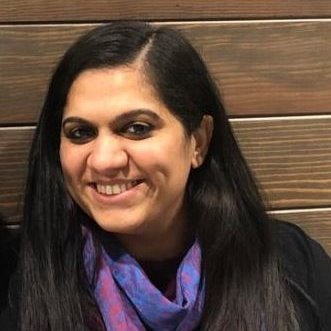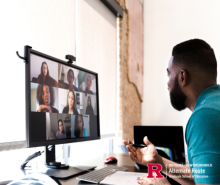Alternate Route Educators Discuss Passions and Challenges in STEM

Within the past 10 years, education careers in the STEM field (Science, Technology, Engineering and Mathematics) have increased. However, many STEM jobs remain unfilled and according to education non-profit ACT, students in the United States are not well-enough equipped in STEM education. A challenge for the education sector right now is how to best support STEM teachers and in-classroom learning – a key component to a robust and well-rounded learning experience.
We spoke to two STEM educators - and Rutgers Alternate Route alumni - about their personal experiences in the field. Darlene Dominguez is a seventh-grade science teacher at Maplewood Middle School and Musarat Merchant is a fourth-grade math/science teacher at The Queen City Academy Charter School. We are grateful to both teachers for taking the time to speak with us. Read their experiences in STEM below!
What do you love about being a STEM educator?
Dominguez: I love the science field. I love being able to invent curriculum-aligned engineering challenges with my students. I love seeing the students connect the lessons to other classes and what they’re learning. I also love incorporating technology in my teaching. I believe all subjects piggyback off each other, but with STEM, those connections are much easier when it comes to teaching science.
Merchant: I enjoy spreading my love of STEM to my students. I appreciate the opportunity to provide ways for students to link and apply STEM knowledge with real-world contexts and help to illustrate the connections between learning and the real world. Since I teach a lot of ethnically diverse students, I love to help them overcome cultural barriers and norms by encouraging them and informing them about different STEM opportunities.
What are some of the challenges you face in the STEM education field and how do you get past them?
Merchant: Some of the challenges I face in STEM education are limited access and exposure to quality curriculum, as well as time constraints for proper science and engineering instruction (as I also teach math-core subjects), and lack of funding for materials and resources needed for effective implementation of integrated STEM instruction.
I overcome these challenges by providing my students with rich and engaging contexts that allow them to access a problem through multiple entry points. I provide them with engineering design experiences, where students can learn from failure, as well as through student-centered pedagogies that promote teamwork and communication skills. I also look forward to professional development courses, which provide opportunities for me to engage with engineering content and practices.
Dominguez: It can be a challenge to connect phenomena and make it more realistic for students. Science can be like a foreign language for some students, and making it connect to their everyday life can be difficult, especially for some who haven’t been exposed to as much as others. I look for each student’s specific interests and try to incorporate them into the lessons.
How do you boost your students' confidence in their STEM skills?
Dominguez: When it comes to engineering challenges, I explain to them the whole engineering process and that no engineer makes a perfect prototype with one try. It takes many efforts, and you’re not going to get it right the first time. It just makes it better when you do get it right. That boosts their confidence when they test a prototype and it doesn’t work the first time.
Merchant: I give students hands-on and interactive STEM activities. Also, my classroom exhibits a student-centric instructional setting where students are presented with open-ended STEM problems. They jump into the activities, work together, and share ideas with one another.
Which teaching trends are you excited about?
Merchant: With this pandemic, our daily activities at work and personal lives are increasingly driven by technology. Students not only need hard and soft skills in technology, but also digital literacy and technological competency. I am excited to learn, but also anxious to implement intrinsically motivational online activities that I can share with my students. I want to learn to create experiences that engage the students’ natural desire and curiosity to solve problems and understand how things work.
Dominguez: I see more technology used now during the pandemic and programs that I didn’t know were out there that teachers are now using. I’m excited to incorporate that into my classroom once I’m back in it.
While STEM education has its challenges, there are plenty of teachers like Darlene Dominguez and Musarat Merchant who are providing high-quality, engaging and supportive STEM opportunities for students. For these teachers, it’s all about giving students opportunities to get hands on with projects like this scribble bot. To keep up on projects like these, you can follow Merchant at @musaratmerchant on Twitter and her school at @QCACS.
If you or someone you know would make a great STEM educator, click here to begin the process of researching the Alternate Route certification process!

 Heather Ngoma has over 25 years of experience collaborating with educators across New Jersey to drive education innovation. She currently serves as the Director of the Rutgers-GSE Alternate Route Program in the Department of Learning and Teaching, a program which helps career changers, recent college graduates, and other aspiring education professionals become licensed teachers in New Jersey. Follow her on Twitter @heatherngoma.
Heather Ngoma has over 25 years of experience collaborating with educators across New Jersey to drive education innovation. She currently serves as the Director of the Rutgers-GSE Alternate Route Program in the Department of Learning and Teaching, a program which helps career changers, recent college graduates, and other aspiring education professionals become licensed teachers in New Jersey. Follow her on Twitter @heatherngoma.





